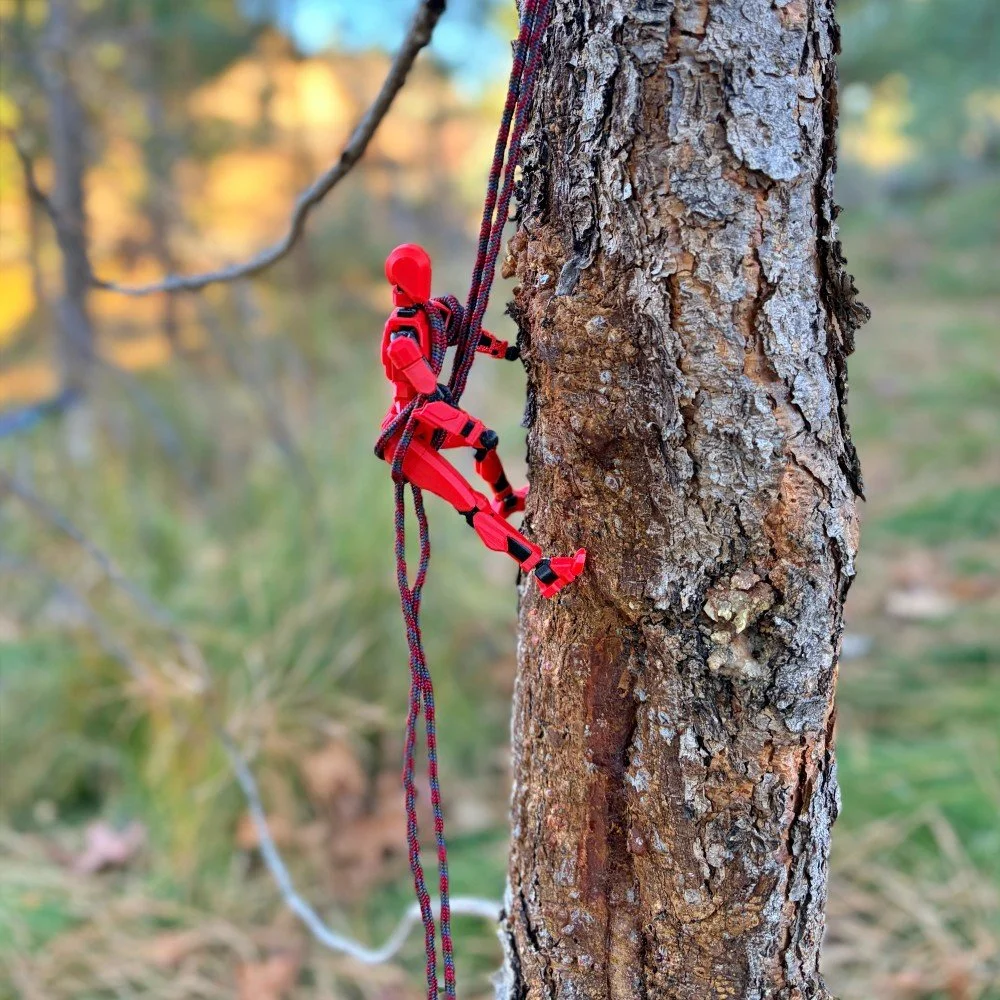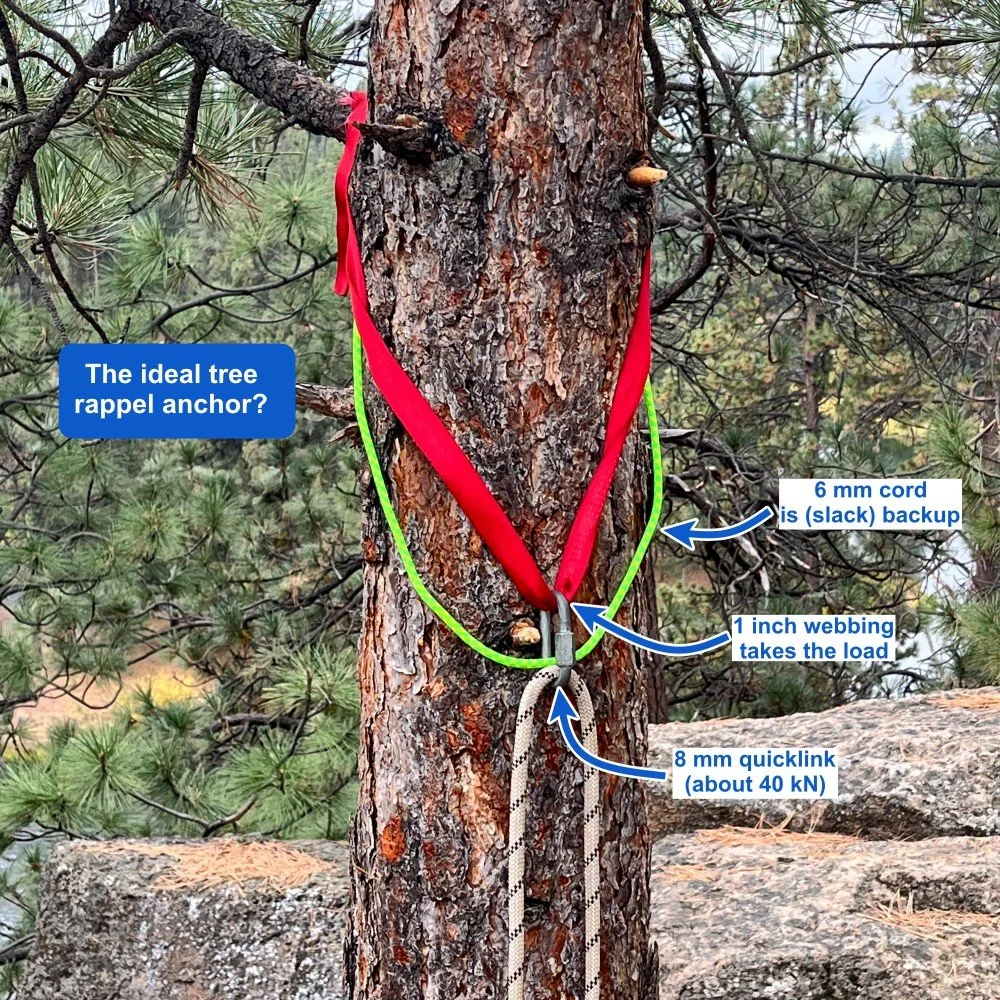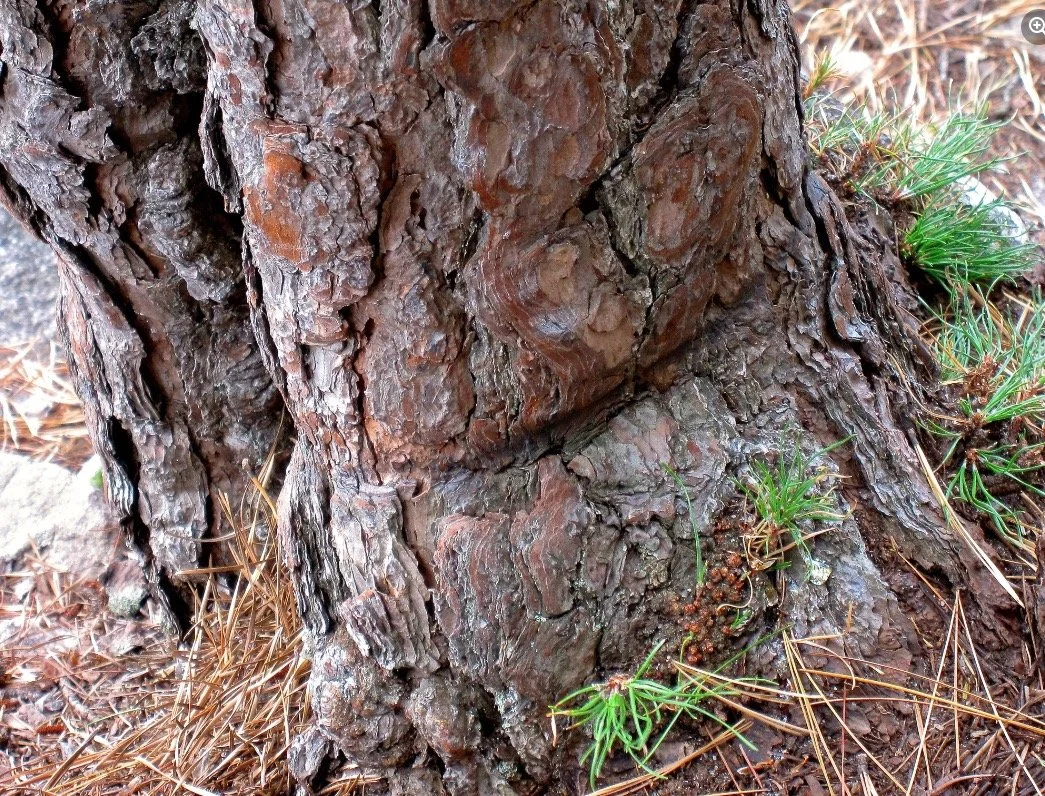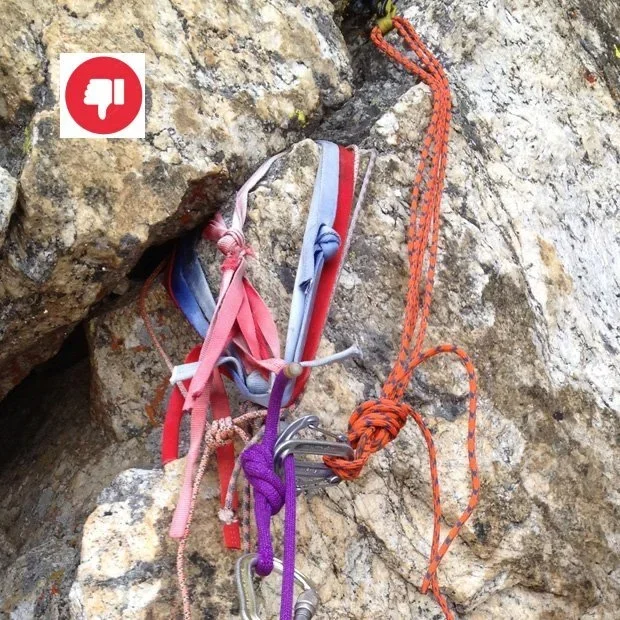Trees for climbing anchors: Rappel
Premium Members can read the entire article here:
Trees can be some of the best climbing anchors, whether it's for top rope, rappel, or multipitch.
This is a big topic, so I'm tackling it in four different parts:
Top rope (coming soon)
Multipitch (coming soon)
Let's get to it.
Is there an option for bolts?
Especially in high use areas, trees can be damaged, not only from ropes and slings, but from soil compaction and erosion around the roots. It may be better in the long term to place a bolted anchor nearby, even if a tree looks convenient.
Let's try to reduce damage like in the (unhappy) photo below.
image: Christian Fracchia / Richard Goldstone, shared with permission
The loads when rappelling are low, so the tree can be smaller
You’re never going to load a rappel anchor with more than about 3x your body weight, so the anchor doesn’t have to be super strong. This means you can probably use a well rooted single tree, with a circumference about the size of both your hands at the base.
Got a big tree? Make your anchor high
With a sturdy tree, it's usually best to rig the anchor around head level. Look for a solid branch or crotch/fork in the tree trunk.
Easier to rig and check
More convenient to start
Probably less friction when you pull your rope
Smaller tree? Keep the load low
If you have the slightest doubt about the strength of the tree, you reduce leverage on the tree (and increase the strength of your anchor) by rigging your rappel anchor close to the base of the tree, maybe even on the ground.
This might make a more inconvenient start to your rappel, but that's the trade-off.
Keep rigging simple and easy to check
Don't overthink it. Rappel anchors (trees or otherwise) are ideally simple, strong, and secure.
Separate strands of webbing or cord, ideally different colors
6 mm cord at a minimum, 7 mm will last longer
Here's one way to rig a solid tree rappel anchor.
Two separate strands of webbing and cord, each tied into a loop. The two independent strands make it easier to replace one it gets compromised.
The wider 1” webbing takes the load, so it's nicer to the tree. The cord is tied a bit loose as a backup. (If you have additional webbing, and you want to spread out the load to the tree even further, you could rig this as a “wrap 2 pull 1”.)
One quick link as the master point. Yes, technically one link isn’t redundant, but an 8 mm quick link is rated to about 40 kN, so it’s #SuperGoodEnough for me. If you want to add another quick link or cheapskate locker, go right ahead.
Can't tell from the photo, but it's rigged about head height over a solid branch.
Inexpensive, easy to check, quick to rig, absolutely strong enough for the job. One more good reason to carry some extra 6 mm cord (and a knife).
Generally, avoid rappelling with your rope directly around the tree. Why?
The extra friction from the tree bark can make it impossible to pull your rope! This can depend on variables like the diameter of the tree, how rough the bark is, how “slickery” your rope is, etc.
It can damage the tree.
If it's a conifer, you can get tree sap on your rope, which is a real bummer.
Even if it's not a conifer, you can get dirt, moss, bark fragments etc. ground into your rope, not so good.
Like most “rules” in climbing, this has some flexibility. If you don't have any cordage to leave behind for an anchor, the tree has fairly smooth bark, and it's in a fairly remote area, it's probably gonna be okay to put your rope directly around the tree. But in general, it's best practice to avoid it.
Damage to tree from being used as a rappel anchor.
image credit: Richard Goldstone, used with permission
Remove the rat nest!
This applies to pretty much any anchor that you find in the wild that has a mess of old cord and webbing, not just trees.
Cut away the junk, add one or two good bits of cord yourself, and make it clean and easy to inspect. Everyone who rappels after you will appreciate it.
Photo below isn’t a tree anchor, but you get the idea. It's a mess. Clean it up.
image credit: Silas Rossi, @silasrossi
Several short strands are usually better than one long one
If you have one long strand of cord, it may be better to cut it into two smaller pieces, and tie a pair of independent loops.` (Even better if your cord is two different colors.) Why?
A single tied loop is easier for someone else to inspect and to replace than one long piece.
Having two different colors of cord makes it even easier to check.
In the photo above, the orange cord could be easily retied into two separate loops.
Use standard knots
Avoid esoteric knots that other people can’t easily check. You may know it’s solid, but if the next person at your rappel anchor isn’t familiar with the triple reverse Portuguese bowline, they're gonna waste time deciding if it's safe or not.
For cord, go with a double fisherman’s or the Flemish bend.
For webbing, use a water knot (aka ring bend). Make the tails plenty long, like 4 inches / 10 cm minimum, and cinch down the knot really well.
Photo below: the “Roy knot”, advocated (by some) as a good rappel anchor knot. Sort of a double strand Flemish bend, I think . . . ?
Probably solid, but can you check it in 10 seconds and have full faith it’ll hold you? (Personally, if I had this much material, I’d cut it in half and tie two independent loops.)
If you tie a loop of webbing on a tree, do you need an overhand knot for the master point?
What are some considerations for making a more permanent tree anchor in a popular area as opposed to a remote alpine route?
What are pros and cons of reliable hitches, like the equivocation hitch or the CEM?












